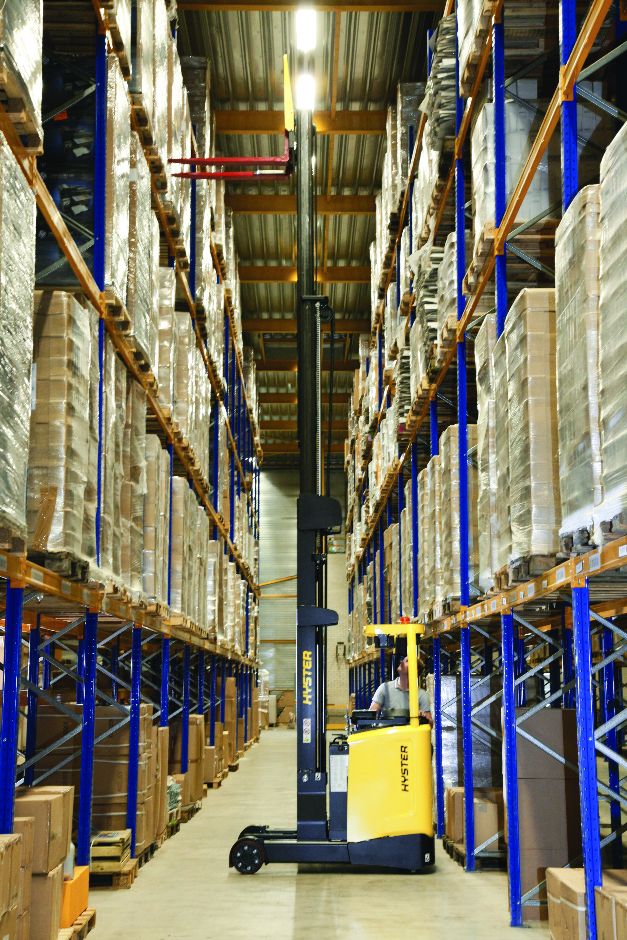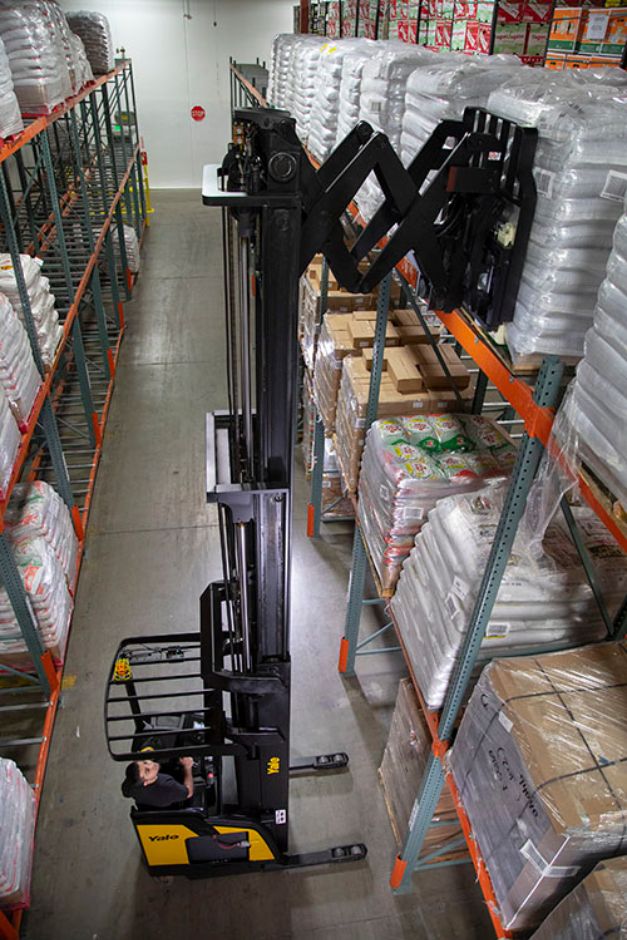Comparison Counterbalance Forklifts VS Reach Trucks
In today’s market there are a number of different types of forklifts available, each with their own unique features, loads they can lift and move and jobs they’re specifically engineered to complete.
Two of the most common types of forklifts are counterbalance and reach forklifts, this week’s blog provides a brief comparison between the two types of forklifts.
What are Counterbalance Forklifts and Reach Trucks?
Counterbalance forklifts are units that have been designed with a large counterweight in the rear that offsets the weight of the load being carried on the tynes, preventing the unit from tipping over.
Reach trucks are specialist units that are specifically designed to safely and efficiently lift and move loads from extended heights that traditional counterbalance forklifts are unable to access.
Differences between Counterbalance Forklifts and Reach Trucks
Balancing the forklift
One of the main differences between a counterbalance forklift and reach truck is the method used to stabilise their loads.
As the name suggests counterbalance forklifts are designed with a larger counterweight in the rear of the unit.
This weight directly offsets the weight of the load being carried out front on the tynes thus greatly reducing the likelihood that the unit will tip over when operating.
Reach trucks do not have an external counterbalance weight instead they rely on two features to stabilise their loads, stabilising legs extend out and to the side of the tynes combined with the weight of the unit’s battery keep the unit stable reducing the risk of it tipping over.

Heavier Loads VS Higher Heights
Counterbalance forklifts and reach trucks have been specifically designed to carry out different tasks.
The ability to design counterbalance forklifts with larger counterweights in the rear allow them to lift and move heavier weights than reach forklifts.
Adaptalift Group supply a large range of counterbalance forklifts with safe lifting capacities ranging from 1.5T right up to 48T, whilst the highest capacity reach truck available for supply has a maximum safe lift capacity of only 2.5T
Whilst not being able to lift heavy loads like a counterbalance forklift, reach forklifts are specifically designed to lift and move goods up to extreme heights that a counterbalance unit cannot reach.
A standard Hyster 1.5XT counterbalance forklift is able to safely lift its maximum payload of 1.5T to a height of only 6m, whilst the Hyster R1.6 reach truck is able to safely lift its slightly heavier payload of 1.6T up to height of 10.5m.

Tyne Reach Ability
One of the main points of differences between a counterbalance forklift and a reach truck is the ability for a reach trucks tynes to extend forwards to be able to access pallets and goods that are being stored double deep in racking.
Counterbalance forklifts tynes are connected to the carriage and unless fitted with tyne extensions are unable to access goods that are stored beyond the front bay of racking.
Some reach truck models have a pantograph attached to their tynes that allow them to extend forwards and access goods that are stored behind the front racking bay, allowing warehouse and logistics operations to utilise double deep racking to double the amount of available racking storage space.

Available Fuel Types
Counterbalance forklifts are available in a greater variety of fuel types to suit specific applications.
Counterbalance units are available in LPG, diesel and battery electric variations, whilst reach trucks are only available in battery electric variants.
Depending on the application more powerful combustion engine variants of counterbalance forklifts maybe needed to provide the necessary power to move heavier loads, whilst for indoor applications emission less battery electric counterbalance units or reach trucks may be the safer choice.
Larger and Small Turning Circles
Reach trucks have smaller turning circles compared to counterbalance forklifts, this allows the units greater maneuverability to work in narrow and confined spaces.
Thanks to their small turning circles reach trucks are able to operate in narrow aisles allowing warehouse racking to be installed to maximise available storage space, often fitting in more aisles than if setup for a counterbalance forklift that requires more space between racking and at the end of aisles to safely turn around in.
Indoor and Outdoor Use
Unless they’re specially designed rough terrain models both counterbalance forklifts and reach trucks are best operated on even solid ground.
With their larger tyres and higher ground clearance counterbalance forklifts are able to operate both indoors and outdoors.
They’re able to easily account for small variations and rough terrain outdoors whilst also being able to operate indoors in warehouses.
Combustion model counterbalance forklifts are also safer to operate outdoors where wet weather maybe a hindrance.
With their small wheels and really low ground clearance reach trucks are primarily for indoor use and not safe to operate outside or across uneven ground.
Reach trucks being battery electric powered is another factor that prevents them from working outdoors as the units battery can be adversely affected by ingress of any water from wet weather.

For assistance in determining whether a counterbalance forklift or reach truck is the best materials handling solution for your application contact one of our experts on 13 22 54 or fill out a contact form and we will respond as soon as possible.